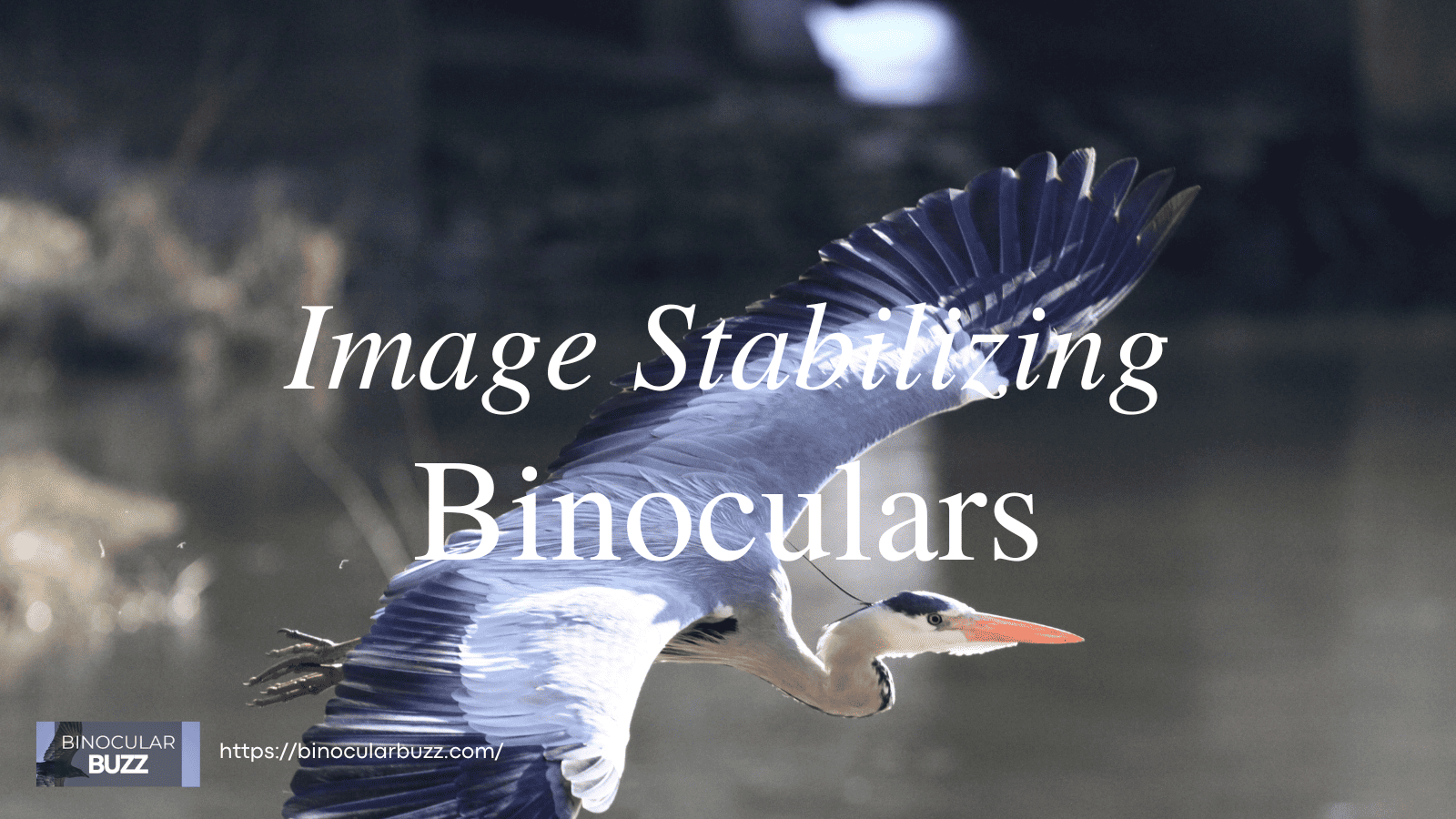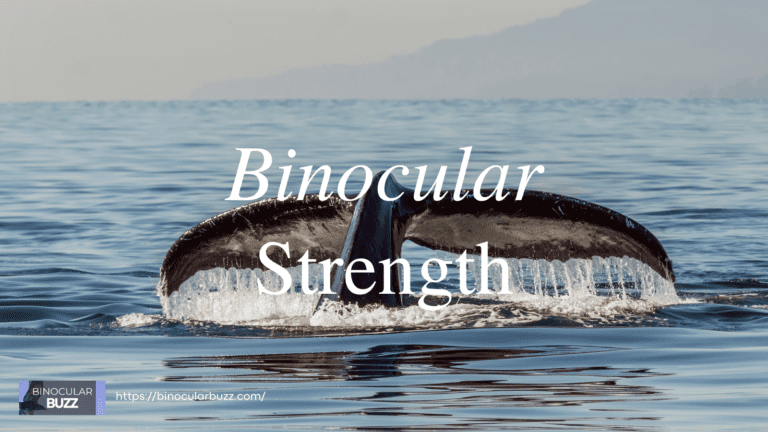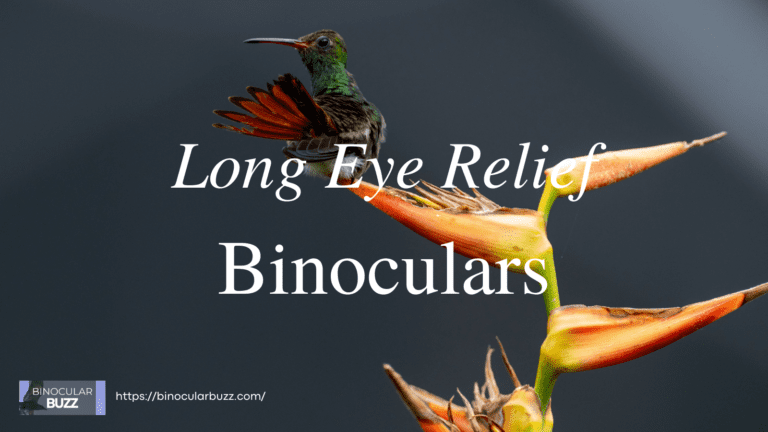Waterproof Image Stabilizing Binoculars: A Practical Guide [2024]
Image Stabilizing Binoculars are a ‘must-have” for certain hobbies but are they waterproof? Can you pursue your passion of watching aquatic wonders or take them out on a canoe?
As a fellow nature enthusiast and an avid fan of traveling to exotic locations, I understand the importance of having reliable equipment that can withstand the elements.
So, let me share my knowledge and experience with image stabilizing binoculars. Read this post and find out if they can handle a splash or two!
This site participates in the Amazon Services LLC Associates Program designed to give sites like ours a way to earn advertising fees by linking to products on Amazon.com at no additional cost to you. I appreciate your support. Thank you!
Image Stabilizing Binoculars
Observing distant objects with precision often requires a steady hand, which can be challenging over extended periods or with heavier binoculars. Image stabilizing binoculars address this issue, providing stability despite hand movements or vibrations.
What are Image Stabilizing Binoculars?
Image stabilizing binoculars, also referred to as stabilized binoculars, utilize advanced technology to counteract hand movements, resulting in a clearer and more focused image.
How Do Image Stabilizing Binoculars Work?
The stability of these binoculars relies on integrated stabilization technology, which comprises gyroscopes, sensors, microprocessors, and an optical mechanism. These components work together in real-time to compensate for hand movements:
- Gyroscopes: These sensors detect any angular movement or rotation of the binoculars.
- Sensors: These sensors detect any linear movements or vibrations.
- Microprocessors: These intelligent processors receive the signals from the gyroscopes and sensors and calculate the necessary adjustments needed to stabilize the image.
- Optical Mechanism: Once the adjustments are calculated, the optical mechanism within the binoculars moves the lenses accordingly to compensate for the hand movements.
Benefits of Image Stabilizing Binoculars
Image stabilizing binoculars have several advantages, when compared to traditional binoculars:
- Steady Viewing: The primary advantage of these binoculars, obviously, is the ability to maintain a stable view, even when your hands are not perfectly steady. This is particularly beneficial when observing distant objects or during activities that involve motion, such as boating or hiking.
- Enhanced Detail: The stabilization technology allows for sharper images with greater detail. This is especially useful when trying to identify specific features of birds or wildlife.
- Extended Viewing Time: As image stabilizing binoculars reduce eye strain caused by shaky images, you can observe for longer periods without discomfort.
- Versatility: These binoculars are available in various magnifications and sizes, catering to different preferences and needs. Whether you’re looking for compact binoculars for travel or high-powered ones for wildlife observation, there’s an image stabilizing model for you.
Popular Image Stabilizing Binocular Brands
Here are a few well-known brands that offer image stabilizing binoculars:
- Canon: Known for their high-quality cameras, Canon also produces image stabilizing binoculars, such as the Canon 10×30 IS II.
- Fujinon: Fujinon offers a range of stabilized binoculars, including the Fujinon Techno-Stabi TS1440.
- Nikon: Nikon’s lineup includes the Nikon StabilEyes VR 14×40, which provides powerful stabilization for long-range observations.
Top Picks for Image Stabilizing Binoculars
Waterproof Design in Image Stabilized Binoculars
In outdoor activities that are on or close to water, such as boating, canoeing or birdwatching, reliable, waterproof, image stabilizing binoculars can be a game changer!
Outdoor enthusiasts often face rain, fog, or accidental immersion, making waterproof binoculars essential. Key reasons why waterproofing matters:
- Protection from Moisture: Prevents damage from moisture, including fogging, mold growth, and corrosion.
- Durability: Withstands outdoor rigors, from light rain to full submersion.
- Versatility: Performs reliably in diverse environments, like rainforests or marine settings.
Levels of Waterproofing
There are different waterproofing levels; knowing them is important for informed binocular selection:
- Water-Resistant: Handles light rain or splashes but not full submersion.
- Waterproof: Endures extreme conditions and can be submerged up to a specified depth.
- Nitrogen-Filled: Offers added protection against internal fogging, ensuring clear viewing.
- O-ring Seals: Look for seals preventing moisture infiltration.
Comparing Waterproof Binoculars
Consider these factors when comparing waterproof binoculars:
- Waterproof Rating: Look for specific ratings like IPX codes, indicating water resistance levels.
- Optical Performance: Features like multi-coated lenses and high-quality prisms enhance clarity and color accuracy.
- Design and Ergonomics: Evaluate weight, grip, and build quality for comfort during prolonged use.
- Warranty: Always pick a reliable brand that offers extensive warranty coverage and has easily accessible customer support.
To help you make an informed decision, I have compiled a comparison table of 3 popular waterproof image stabilizing binoculars:
| Model | Waterproof Rating | O-ring Seals | Nitrogen Purging |
|---|---|---|---|
| Fujifilm Techno-Stabi TS-X 14×40 | Waterproof | Yes | Yes |
| Canon 12×36 Image Stabilization III | Water Resistant | No | No |
| Nikon PROSTAFF P3 8×42 | Waterproof | No | Yes |
Note: The IPX rating system ranges from 0 to 8, with higher numbers indicating a higher level of water resistance.
When to Use Image Stabilizing Binoculars?
Use Image Stabilizing Binoculars for:
- Professional Birdwatching: Image stabilizing binoculars are invaluable for professional and dedicated birdwatchers. The stabilization technology helps maintain a steady view, allowing for clearer and more detailed sightings.
- Wildlife Research: If you are observing wildlife in their natural habitat for extended periods to study and record their habits, image stabilizing binoculars help by minimizing hand tremors and vibrations.
- Safari: Image stabilizing binoculars can be extremely helpful when you are on a safari and are trying to watch a herd of zebras from a bouncing jeep.
- Boating: Image stabilizing binoculars are ideal for boating enthusiasts, enabling steady viewing even on a moving vessel. They are particularly useful for spotting distant landmarks, navigation aids, or marine wildlife.
Use Waterproof Image Stabilizing Binoculars for:
- Marine Activities: Waterproof image stabilizing binoculars are essential for marine activities such as sailing, fishing, or whale watching. They withstand exposure to water splashes, spray, and even full submersion, ensuring reliable performance in wet environments.
- Extreme Hiking: For outdoor enthusiasts exploring rugged terrain, waterproof image stabilizing binoculars provide peace of mind. They can withstand rain, snow, or accidental immersion, making them suitable for all weather conditions.
- Nature Photography: Waterproof image stabilizing binoculars are valuable for nature photographers who often work in damp or rainy environments.
- Search and Rescue Operations: In emergency situations or search and rescue operations, waterproof image stabilizing binoculars are essential tools. They provide clear and stable vision, even in challenging weather conditions or near bodies of water.
- Field Research: Scientists, researchers, and environmentalists conducting fieldwork benefit from waterproof image stabilizing binoculars. They offer durability and reliability in various outdoor environments, ensuring accurate observation and data collection.
Image Stabilizing Binoculars are Not Necessary for:
- Casual Sightseeing: When casually sightseeing or exploring natural or urban environments, during travel, image stabilizing binoculars are not really necessary.
- Hiking, Camping Backpacking: Activities that do not involve long periods of binocular usage do not benefit much from image stabilizing binoculars.
- Indoor Events: For indoor events like concerts, theater performances, or lectures, image stabilizing binoculars are not necessary.
Bottom Line
While image stabilizing binoculars can be waterproof, selecting the right balance between features requires careful consideration. Prioritize your needs, thoroughly examine specifications, and choose accordingly for enjoyable outdoor adventures.
So, if you are super passionate about your hobby (or profession), invest in a reliable pair of waterproof image stabilizing binoculars and enhance your outdoor adventures, irrespective of weather conditions!










